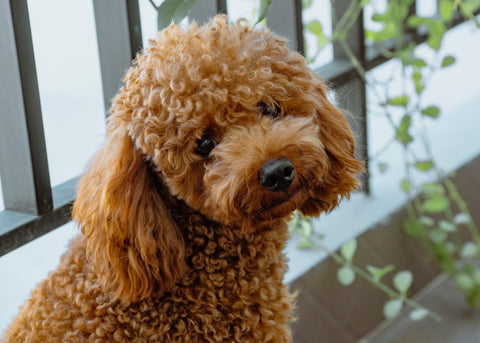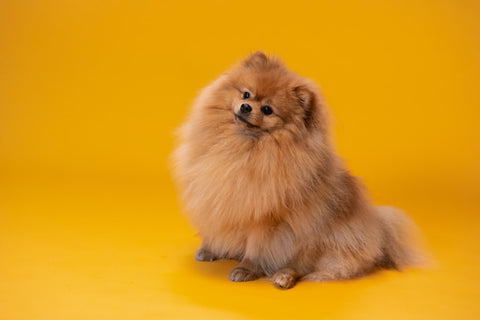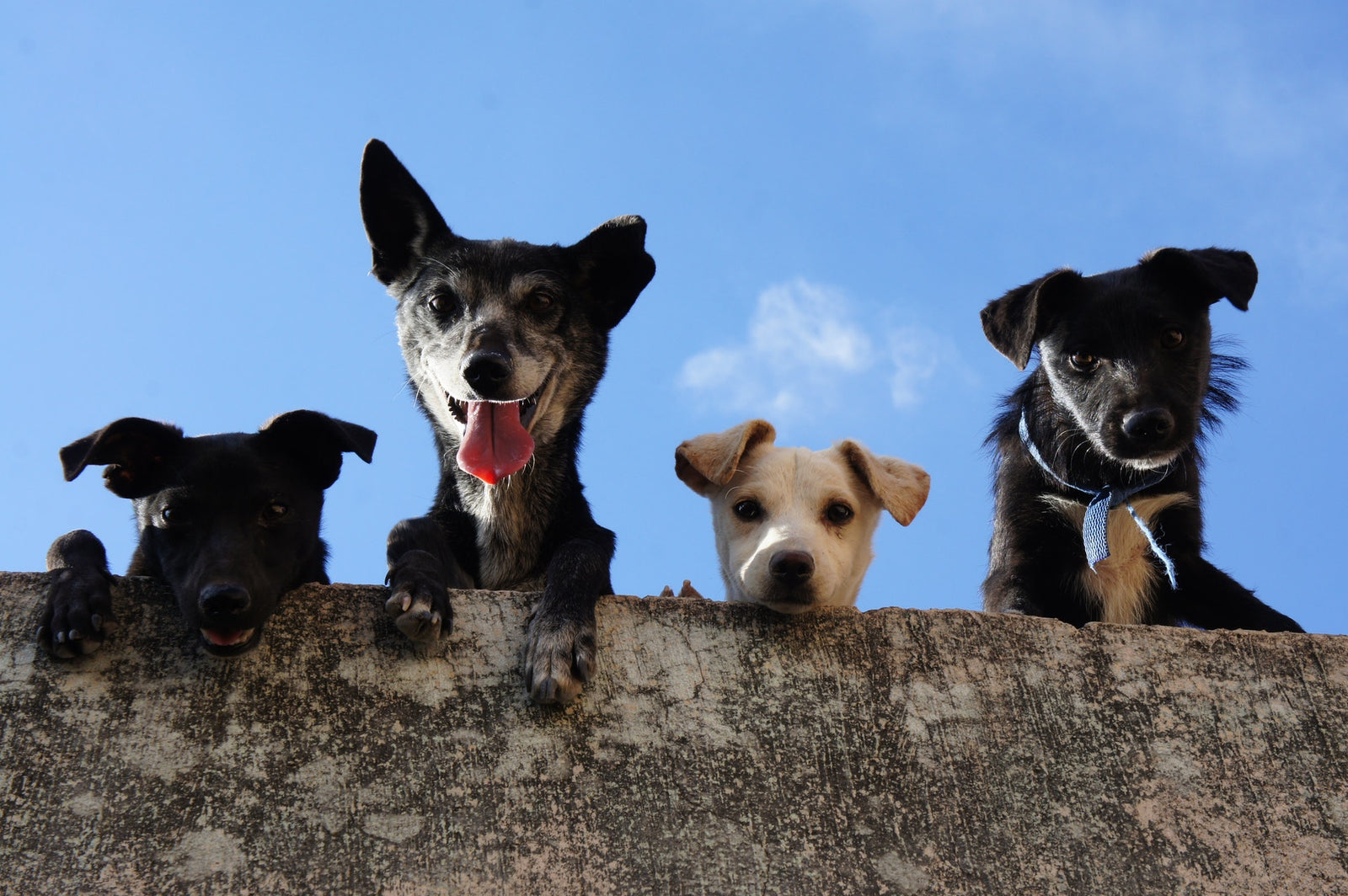Nowadays, your precious pup is likely content to chase squirrels, dig in the backyard, or play a rousing game of fetch with you at the park. Or, perhaps they prefer to pass the time at your front window, alerting you to every passerby, including neighborhood cats. If you have children in the home, your pup might even busy themselves watching over the kids, or maybe they are content to simply play with their favorite dog toy. But, no matter what your pup's favorite pastime, did you ever wonder why your dog does it?
Often, the basis for your pup's habits and actions stem from the origin of your dog. In other words, depending on your dog's breed (or breeds if you're blessed with a lovable mix), they likely have certain innate traits that develop from what their breed was bred to do.
Here's a look at 20 of the most popular dog breeds and their initial purposes.
Medium to Large Breed Dogs

Labrador
By far one of America’s most popular dog breeds, this outgoing and affectionate pup makes an excellent companion and wonderful family dog. Labradors began as retrievers for anglers and hunters, mainly retrieving ducks on hunts and fish that fell off the trawler boat during fishing excursions. These pups are excellent swimmers, thanks to their original purpose, with strong tails that help them swim and turn deftly through the water.

Dalmatian
Although the exact origin of this popular spotted breed is questionable, breeders first developed Dalmatians to be coach dogs. Their main job was to run alongside horse-drawn carts, guarding the horses and carts whenever they were unattended. In the 1800s, horses also pulled fire engines, thus starting the ever-popular connection of Dalmatians as firehouse dogs.

Poodle
You might not associate poodles with hunting dogs, but that’s exactly how this breed began. Poodles originated in Germany, bred as duck hunters with extraordinary swimming abilities, excellent retriever skills, and exceptional intelligence. Their notable curly coat helped protect them from the elements, as did their popular show cut. Breeders initially created the stylish and classic Standard Poodle haircut to make the dogs move freely in the water while still protecting critical parts of their bodies from the cold.

German Shepherd
German Shepherds are highly regarded as police dogs, as well as military dogs. However, believe it or not, that was not the breed’s initial purpose. Instead, breeders initially developed German Shepherds to herd sheep. However, the skills these dogs acquired for sheep herding, like intelligence, speed, and agility, prepared them for their excellent police and military endeavors.

Golden Retriever
Surely another one of the nation’s most beloved dog breeds, Goldens were the result of a man named Lord Tweedmouth (Dudley Marjoribanks), who desired to create the perfect gundog. So he carefully mixed a “Yellow Retriever” with a Tweed Water Spaniel (now extinct), a little bit of Irish Setter, and Bloodhound. Over time, and with thoughtful care, this pup became an excellent retriever on hunts.

Saint Bernard
Hospice monks developed the Saint Bernard breed many centuries ago in an effort to help those lost or trapped in the snowy Alps around the monk’s hospice. The mighty pups could manage the treacherous conditions and locate people buried under substantial snow drifts and avalanches.

Siberian Husky
This beautiful breed originated in northeast Asia and served as companions and sled dogs for the Chukchi people. Their sleek build and thick fur coat were the perfect matches for cold and snowy conditions. These strong dogs became the direct ancestors of today’s Siberian Husky, and today many people still participate in endurance and sledding spots with their huskies.

Newfoundland
Newfies are undoubtedly one of the most huggable pups around, big and furry and gentle, but their start was as hard-working rescue pups. They served on Canadian fishing boats, saving men who fell overboard, hauling fishing nets, and carrying the daily catch to market. Today, Newfoundlands still work as water-rescue dogs in many places.

American Bulldog
Initially, these well-muscled and strong dogs worked on farms, catching feral pigs and the like and also offering companionship and protection to their families. During WWI and WWII, the breed almost went extinct, but two gentlemen by the names of Alan Scott and John D. Johnson brought the breed back.

Doberman Pinscher
The initial inspiration for this sleek and intelligent breed stemmed from a tax collector’s desire for protection. It started with a tax collector in 19th century Germany, Louis Dobermann, who wanted an imposing companion to accompany him on his tax collecting endeavors and discourage hostile reactions from the people. Today, Dobermans serve as guard dogs and also service dogs, rescue dogs, and work with police and military units.
Small to Medium Breed Dogs

Yorkshire Terrier
Nowadays, this silky-coated terrier is the epitome of a fashionable lapdog, but initially, it was bred to chase down rodents through textile mills. This initial job description is the reason for the Yorkie’s small stature; they needed to fit through tiny crannies and spaces throughout the mills.

Shih Tzu
Initially developed within the Chinese emperor’s palace, this “lion dog” didn’t work but served as a companion animal and lap warmer to many royals. In fact, the breed stayed behind palace walls until about the 1930s, when the rest of the world finally started to get a glimpse of the regal breed.

Pug
Pugs were another breed developed as companion pups for the Chinese emperors. The adorable dogs stayed within the palace walls, and the only way for anyone on the outside to receive one would be as a very special gift. Eventually, around the 1500s, Dutch traders brought some of the dogs back to Europe, and the world met the adorable Pug.

Chihuahua
Images of pups resembling the tiny Chihuahua persist throughout history, decorating numerous artifacts from various lost civilizations. Although the breed is mainly associated with Mexico, how exactly it came to be there is somewhat of a mystery. Eventually, the Aztecs developed the pup into the small Chi we recognize today.

French Bulldog
Initially a companion animal to many lace makers throughout various English cities, the tiny Bulldog journeyed with the lace makers to France. Over time, the breed crossed with other breeds and acquired their famous bat ears. Once Parisians caught sight of the precious pups, the Frenchie soon became a sophisticated city dog.

Cocker Spaniel
The primary reason for developing Spaniels was to create an excellent bird dog to help hunters on expeditions long before the advent of the rifle. As the large group of spaniels eventually split into more distinct breeds, the Cocker got its name because its main target on hunts was woodcock.

West Highland White Terrier
This cute and perky pup began its days as an exterminator, chasing down and getting rid of rat infestations on the British Isles. Although the specific origin of the breed is somewhat of a mystery, the Westie we know and love today got their start in the 1700s, also as an exterminator.

Bichon Frise
Originally, people believe these fluffy-coated dogs traveled with Spanish sailors, who used them for bartering purposes. The breed soon became a staple among European nobles, holding high favor among the wealthy. However, after the French Revolution, the Bichon’s status as a pampered pooch ended, and many ended up on the streets. However, possessing keen intelligence, the pups soon attracted the eyes of street performers who trained them to do all sorts of tricks, and the Bichon became a talented circus performer.

Maltese
Known for its beautiful coat and regal attitude, it’s no surprise that the Maltese originated as a prized possession of several empires, associated with precious items like gems, silks, and exotic spices. As a result, the Maltese caught the eye of ladies of importance worldwide and quickly became a status symbol and the ultimate fashion statement.

Pomeranian
The Pomeranians descend from Arctic sled dogs, but these little pups weren’t bred to pull sleds and cargo. Instead, this smaller member of the spitz breeds gained favor with Queen Victoria as a faithful companion. The Queen continued to work with the breed, reducing its size from about 30 pounds to the tiny powder puffs we know today.
Have you discovered the origin of your dog? Of course, every pup is unique, so it's always possible your furry friend possesses a personality all their own and stands apart from their breed's norm. But that's okay because what's most important is that your dog is yours, whether they like to spend their day snoozing on the couch or can’t wait for you to snap on the leash for a run. They have everything they need to be the perfect companion.
If you want to learn more about what makes your dog tick, check out the rest of our blog. We're always adding interesting resources and tidbits to help you increase your pet-parenting prowess.

